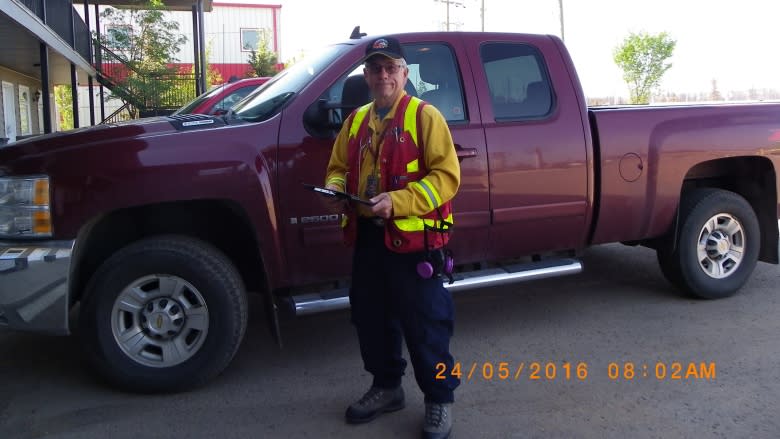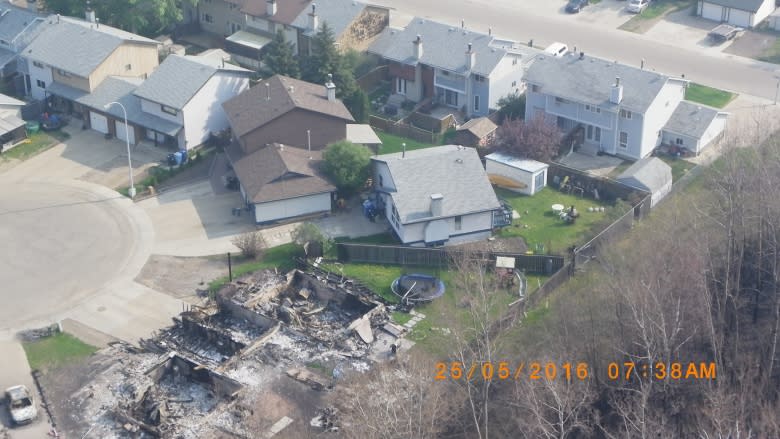Widespread destruction of Fort McMurray homes largely preventable, report says
A new report concludes the widespread destruction of homes in the Fort McMurray wildfire was largely preventable.
"The total number of homes lost at Fort McMurray would have been far fewer if there had been more widespread adoption of FireSmart risk-reduction practices by homeowners," according to the report by the Institute for Catastrophic Loss Reduction.
FireSmart Canada is a national program that promotes measures to reduce wildfire risk.
The Fort McMurray wildfire in early May burned more than 2,400 structures and nearly 600,000 hectares of forest.
Alan Westhaver, a wildfire management specialist and author of the report, investigated the hard-hit neighbourhoods of Beacon Hill, Abasand, Thickwood and Timberlea.
In his report, Westhaver said he "discounted" direct contact from flames or radiant heat of the forest fire as being "significant sources" of home ignition. Instead, he found that most homes were likely ignited by wind-driven embers in areas of the city where the fire made its "transition from forest into urban neighbourhoods."
"Once established, the fire would have spread from structure to structure as an urban conflagration, accounting for the majority of home losses," according to an abstract of the report Westhaver wrote.
Report points to FireSmart safeguards
During his field work in the city from May 19 to 28, he compared homes that burned to those that did not, and said in 90 per cent of the cases homes that survived had adopted FireSmart principles, unlike those that ignited.
"We were able to see that many combustible objects around people's backyards and aspects of their homes were flammable," said Westhaver. "And these are things that are readily dealt with for the most part by residents working on their own at low cost, simple solutions."
Those solutions, he said, include selecting less flammable vegetation and breaking up pathways fire can follow by pruning lower branches, moving firewood piles and recycling away from the home and using topsoil instead of wood chips.
"Homeowners do need to take more responsibility," said Westhaver. "Most of these things can be accomplished by homeowners with a rake, a pair of pruning shears, and a simple understanding of how fire spreads."
Westhaver's report also notes that overall, the buffer zone between neighbourhoods and the forest was sufficient.
"We all recognize that this is an unbelievable tragedy for the residents of Fort McMurray," Westhaver said. "Anything that we can do to learn lessons from their tragedy and prevent it in the future is very, very important that we do that."



